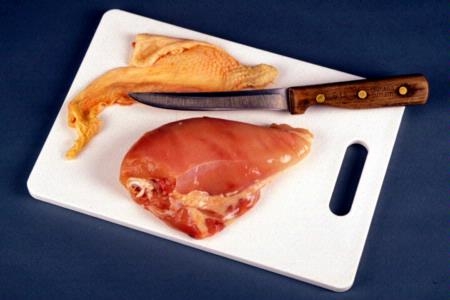
Christine Bruhn, UC Cooperative Extension specialist in the Department of Food Science and Technology at UC Davis, says the need for increased meat irradiation was revealed in a recent study. She and her staff analyzed video footage of 120 people preparing a self-selected chicken dish and salad in their home kitchens. Bruhn reported that 65 percent did not wash their hands before starting the meal and 38 percent didn't do so after touching the raw chicken. Other food preparation practices that increase the likelihood of causing food-borne illness were also observed.
"People don't realize what they are doing with their hands, especially after touching raw poultry," Bruhn said. "To take an example, if you had honey poured on the chicken, you touch the honey and touch the cupboard and the door handle, it is spread all over everything and cross contaminates the kitchen."
Prompted by the findings, a number of organizations are launching an educational campaign to increase consumer knowledge about safe food preparation practices in the home. In addition, Bruhn recommends wider use of irradiation of meat.
She said meat vendors are concerned consumers will reject irradiated food, a sentiment she considers a "cop out."
"Supermarkets are the gatekeepers. It is not the consumer blocking it," Bruhn said.